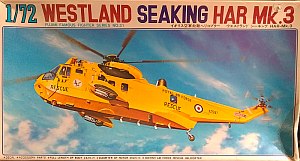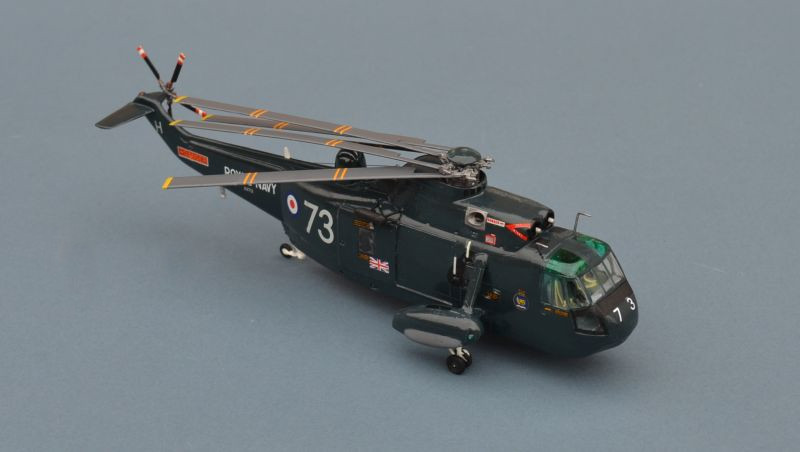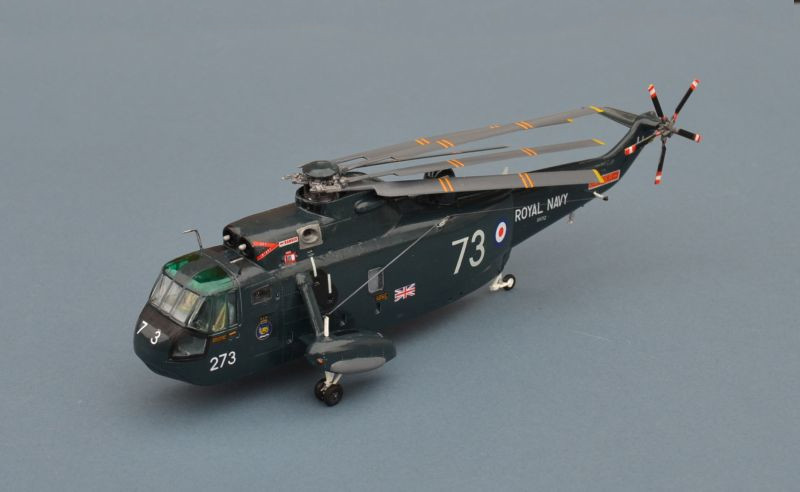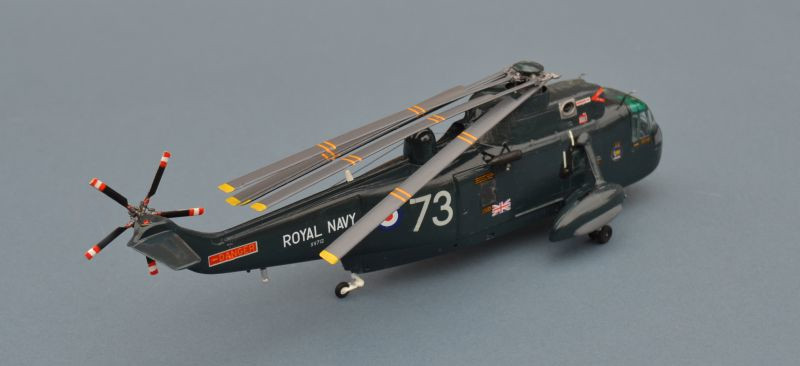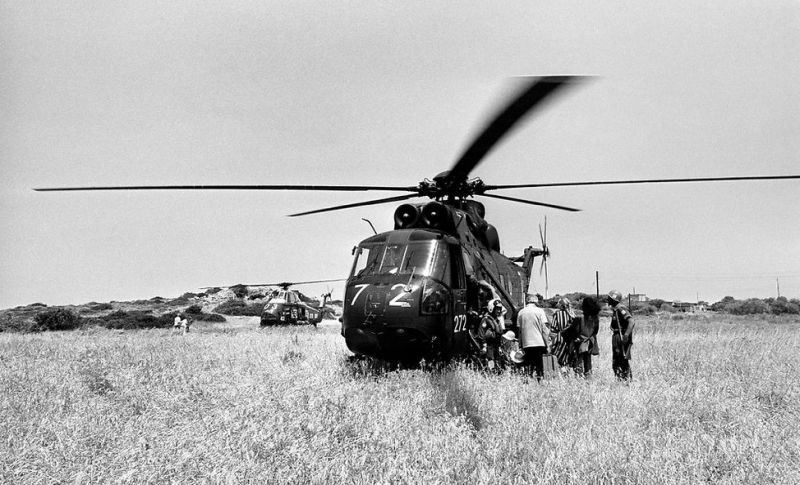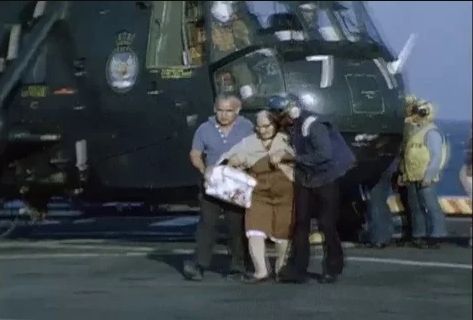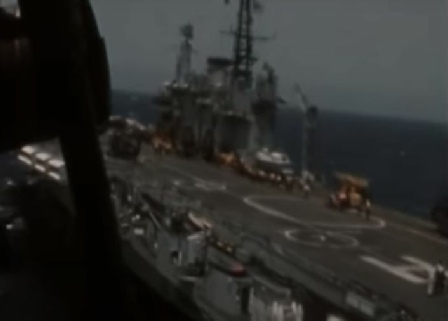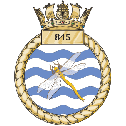May 2021 Part 3
HMS HERMES / INS VIRAAT
Commando/ASW Carrier
845 Sqn, HMS HERMES, Kyrenia Cyprus 1974
Matchbox 1/72 , with kit and Modeldecal markings.
In 1974, HMS HERMES was returning from a deployment to the USA, when she was diverted to Cyprus in response to the Turkish invasion of the island. Her first task was to land the Royal Marines of 41 Commando, based in Malta, to reinforce the British Sovereign Base Areas of Akrotiri and Dekhelia on the south and western tip of the island, where the resident Army garrison was struggling to control the very large base perimeter in the face of advancing Turkish tanks, retreating Greek Cypriot National Guard units and many fleeing civilian refugees. Britain, along with Turkey and Greece, was a legal guarantor of Cypriot independence, but the unilateral action by the Turks left the UK in an impossible position. Without US support (the US was indifferent to the Turkish invasion, hostile to any suggestion of UK military intervention and mostly determined not to let Greece or the Soviet Union become involved) there was little that could be done but to sit behind their barricades and offer help to refugees where feasible.
Cyprus was a major holiday destination, especially for British tourists, so HERMES was tasked to move to the north of the islands, just off the invasion beaches, along with Destroyer HMS DEVONSHIRE, Frigates HMS ANDROMEDA and HMS RHYL, plus RFA OLNA and evacuate as many by helicopter as they could. Initial efforts were hampered by Turkish shelling of the beaches and various threats to HERMES, but a move of the helicopters slightly inland to safer collection points away from bombardment allowed the evacuation to proceed. Over the course of a few days, over 1,500 civilians were lifted from Kyrenia with 919 persons taken aboard HERMES. Large Union flags were applied to the helicopters in the hope that neither side would shoot at them. Link to YouTube video of evacuations
© IWM HU 101347 -


HMS HERMES saw many different roles during her service. Starting off in 1959 as a strike carrier, equipped with Sea Vixen FAW.1s, Scimitars, Gannets and Whirlwinds, by 1962 the Wessex had replaced the Whirlwind and by 1964, the Buccaneer (and Sea Vixen FAW.2) provided her biggest punch. As the smallest and most junior of the RN’s carriers, she perhaps did not receive the public visibility that she should have, but she was also the most modern by far and her Buccaneer/Vixen/Gannet combination made her more powerful and capable than most of the world’s air forces.
By 1968, ASW Wessex 3s were added to her air group in a foretaste of her next role as Commando and ASW carrier. At the end of 1970 she relinquished the conventional strike carrier role and her arrestor wires and steam catapults were removed. In 1973 she returned to service as a helicopter carrier with ASW Sea Kings and Commando Wessex Vs befitting the withdrawal of standing British forces from east of Suez and the evolving threat to NATO.
During this period she was called to reinforce British Sovereign Areas in Cyprus during the Turkish invasion, by landing 41 Commando Royal Marines (from Malta) at Akrotiri, then moving to the north of the island to evacuate civilians from the invasion beaches at Kyrenia. Sea Kings HAS.1s and Wessex Vs (accompanied by a Wessex 3 from HMS DEVONSHIRE) were painted with large Union Flags and landed under fire to rescue casualties and holidaying families caught up in the invasion.
Images and text © www.gengriz.co.uk unless otherwise noted
Altogether, British Forces rescued some 7,526 people, 5,171 of whom were British citizens, with HERMES’ helicopters running a shuttle from ship to shore embarkation points where armoured British Army units had gathered evacuees.
Two of my models below represent this major Cold War crisis with HERMES playing a key role and demonstrating beyond doubt the power and utility of an aircraft carrier and a mobile Commando Brigade to project national intent and interest, prevent and limit conflict in a military and humanitarian crisis.

Building the Matchbox Wessex Kit:
This is actually a kit that I built many years ago (1988 I believe), using a variation of the the kit decals to produce a Junglie Wessex V from HMS BULWARK. For this porject it has had a comprehensive makeover, adding decals for 845 in HERMES iin the mid 1970s, plus wire radio aerials along both fuselage sides. I have also taken the opportunity to correct a mistake with the tail rotor and to paint several parts (including the main rotor blades and pilot) in more realistic colours. Finally the kit has been given a coat of matt varnish. The end result is very pleasing and moves this older kit form a position of being one of my less treasured kits to holding its head up high amongst the newer ones!
The Matchbox Wessex kit is a reasonable effort, not too difficult to build (in its
MkV version -
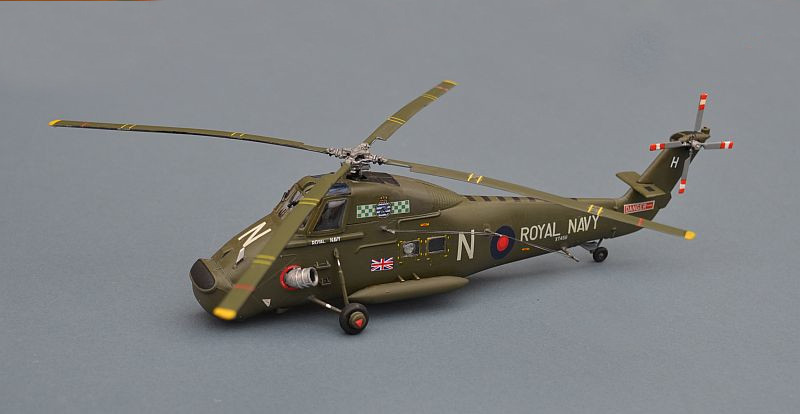
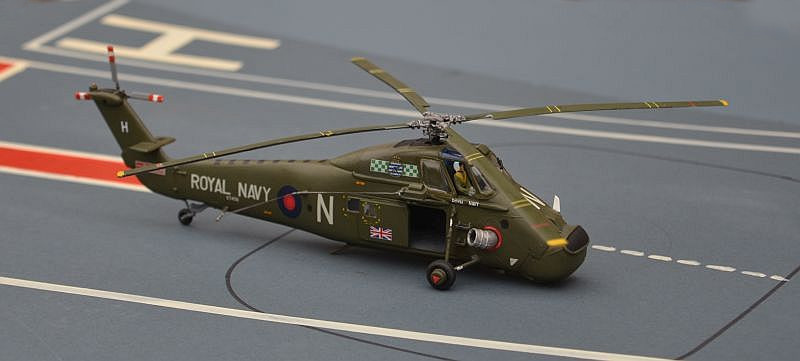
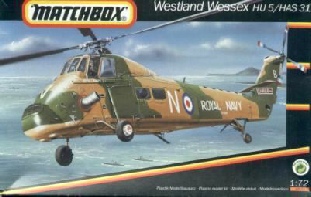

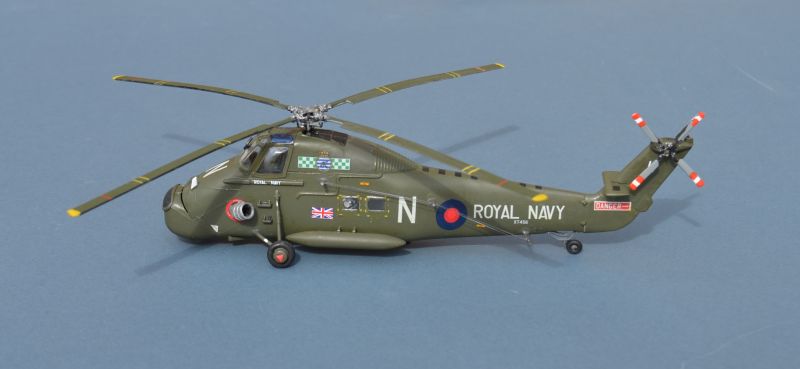
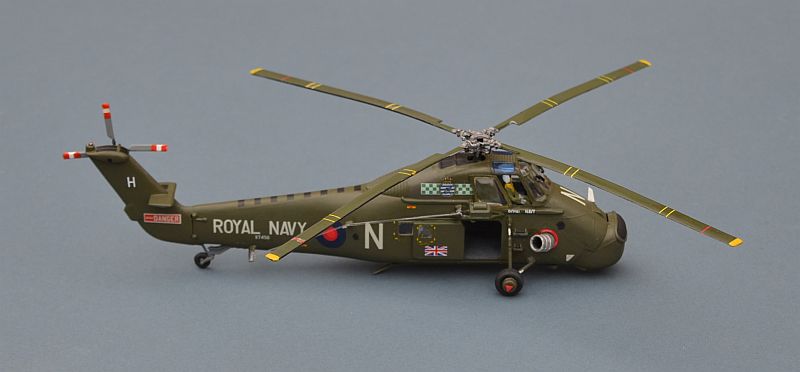

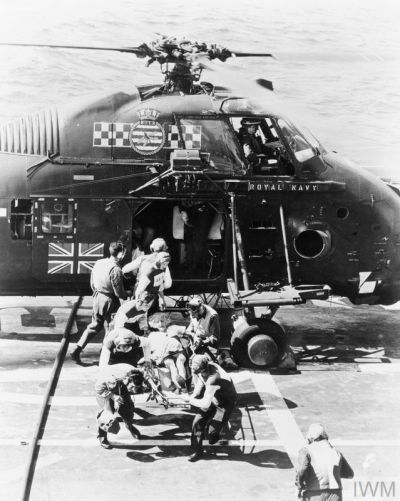
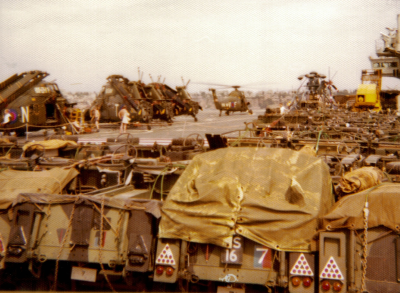
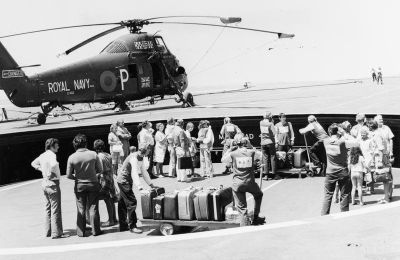
Above: A wounded civilian is rushed from an 845 Wessex to HERMES’ sick bay © IWM MH 28981
Right Top: 41 Cdo vehicles on HERMES deck before deployment ashore to reinforce Akrotiri.
Above : Evacuated Civilians from Kyrenia on HERMES lift before transfer into Akrotiri © IWM MH 33994
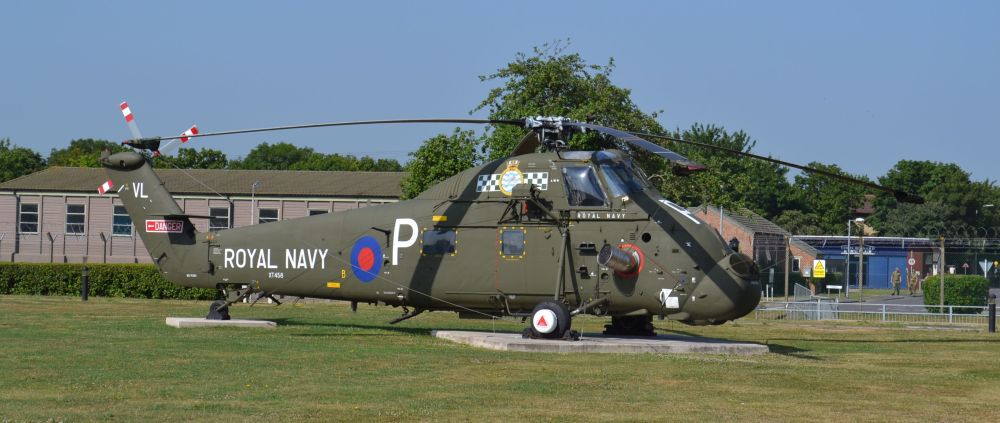
Above : A restored ex-
814 Sqn, HMS HERMES, Kyrenia Cyprus 1974
Fujimi 1/72 , with kit and Modeldecal markings.
In the early 1970s, HERMES role was a little confused, with the Wessex V Commando helicopters of 845 mixed alongside the ASW Sea King helicopters of 814 Sqn. Armed with Mk.44 torpedoes or Mk.11 Depth Charges, as well as dipping active sonar, they were a formidable force in their own right and were capable of carrying a single WE.177A Nuclear Depth Bomb on the fwd port pylon.
Nevertheless, although mainly focused on ASW, the Sea Kings were more than capable of lifting Royal Marines or civilian evacuees, so were also pressed into that role for the Kyrenia evacuations. As with the Wessex Vs and DEVONSHIRE’s single Wessex 3, large Union Flags were added to the helicopter sides to identify them.
Building the Fujimi Sea King Kit:
Until relatively recently the Fujimi kit was the best 1/72 Sea King option available.
Its a little simplified in detail, based on the US SH-
The nose of this kit is its worst part -
Monogram and the old Airfix kits are travesties that only look vaguely like a Sea
King, most noticeable when you try to fit the anti-
This one has a mix of kit decals and spares, with scratch built wire aerials and
their pylons. The blade fold is nothing special -
